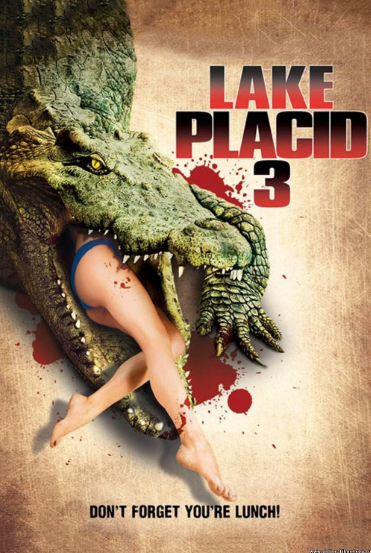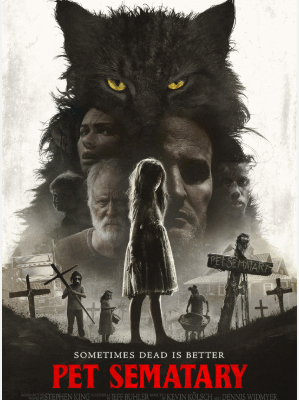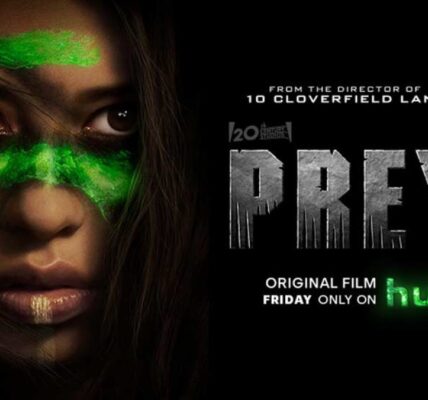1. Plot Summary
A year after giant crocodile attacks plagued Black Lake, Maine, things seem quiet. Sadie Bickerman has died, and her nephew Nathan, his wife Susan, and their son Connor move into her lake-side house with the intention to sell it. However, Connor dismissively feeds a clutch of juvenile crocodiles he finds in the lake.
Over the next two years, these baby crocs grow into dangerous adult predators. As Connor continues secretly feeding them—even resorting to stealing meat—attacks begin: wildlife, campers, and others near the lake become prey. Meanwhile, Nathan, local sheriff Tony Willinger, and Reba (a hard-nosed hunting guide) all become involved as the threat escalates. When attacks reach Nathan’s family and nearby townsfolk/visitors, the characters must band together to stop the crocodiles before more lives are lost.
2. Notable Elements
What stands out:
- Creature Threat & Escalation: Starting from juvenile crocodiles being fed by Connor, the film builds a gradual escalation—from small attacks to larger, horrifying ones. It leans into the idea that human negligence (feeding, ignoring danger) can produce monstrous consequences.
- Character of Reba: Yancy Butler’s Reba is one of the more memorable characters—tough, blunt, and action-oriented. She provides a contrast to the more morally conflicted family (Nathan, Susan, Connor), and injects a dose of “hunter vs hunted” grit.
- Camp / B-Movie Charm: The movie embraces low-budget thrills; there are moments of intentional/unintentional absurdity (e.g. Connor’s antics, the “skinny-dipping attacked by baby crocs” setup). For fans of creature horror, this can be entertaining in a guilty-pleasure way.
What’s weaker:
- CGI & Effects: The crocodiles and action scenes often suffer from unconvincing CGI or obvious limitations. This is a frequent complaint for the Lake Placid sequels.
- Predictability & Tropes: Many of the plot turns follow standard creature-feature formulas: the kid who feeds monsters, the group of campers, the reluctant law enforcement, etc. There are few surprises.
- Character Depth & Motivation: Aside from a few (like Reba, Nathan), most characters are fairly thinly sketched. Connor’s motivations are simple (loneliness, desire for attention), which works enough, but many supporting characters feel disposable.
3. Themes & Messages
- Human Neglect & Consequence: The film underscores that small acts (feeding wild animals, ignoring warnings) can have large, dangerous repercussions. Connor’s “harmless” feeding of baby crocs becomes a catalyst for disaster.
- Family, Responsibility, and Parental Absence: Connor’s misbehavior is driven in part by feeling neglected by his parents, which becomes a moral thread: responsibility for the family, both protectively and in avoiding unintended consequences.
- Nature vs Human Civilization: The crocodiles represent a nature that cannot be contained or ignored. The humans build homes, sell property, trust that threats are gone—but nature often returns, especially when boundaries are breached.
- Survival & Courage: As the threat escalates, characters must choose either to confront danger or be consumed by it. Reba and Nathan provide contrasting approaches—one more head-on, the other initially more cautious.
4. Personal Impressions
Strengths:
- For what it is, Lake Placid 3 is more fun than many of its predecessor sequels. Its creature attacks are more frequent, the danger more immediate, and Reba’s character gives it some backbone.
- It has a certain guilty-pleasure appeal: predictable as it may be, the film leans into its creature horror identity, and does not hide its absurd pieces (skinny dipping, naive feeding of wild crocs etc.) which makes it more entertaining if you’re in the mood for monster mayhem.
- The family aspect, especially Connor’s arc (lonely kid, doing something dangerous out of spite/attention) gives emotional stakes: it’s not just about killing crocodiles, but about how human error starts the chain of events.
Weaknesses:
- The dialogue and acting are uneven; some lines feel cheesy, characters occasionally act in ways that strain credibility just to get the plot forward.
- Some of the CGI effects disappoint, especially in scenes of crocs interacting with people in close quarters. Creature design and integration into scenes often betray the budget.
- The ending, while serviceable, doesn’t do much to surprise; by the time the big showdown comes, many viewers have already guessed the beats.
5. Audience Recommendations
You might especially enjoy Lake Placid 3 if you:
- Like creature horror / monster movies, especially ones with crocodiles, beasts, or killer animals.
- Enjoy low-budget horror with campy moments and predictable tropes—if you don’t mind that, it can be fun.
- Are a fan of “nature gone wild” horror, or “humans messing with wildlife & getting bitten back” moral tales.
On the other hand, it may be less appealing if you:
- Prefer high production values, realistic effects, or deep, surprising writing.
- Dislike clichéd plots, tropey character behaviours, or scenes designed just to shock rather than to build tension.
- Want horror that leans more psychological or with a twist rather than straightforward creature attacks.
6. Conclusion & Rating
Overall, Lake Placid 3 isn’t a masterpiece, but it does deliver for the kind of movie it’s aiming to be: monster horror entertainment with some family conflict, creature carnage, and a smattering of B-movie charm. It’s particularly good if you go in with the mindset of enjoying it for its thrills rather than expecting depth or originality.
Final Recommendation: If you’re in the mood for a monster movie with crocodiles, fear, some gore, and don’t mind cheesy moments, Lake Placid 3 is worth a viewing. Just don’t expect subtlety.
Five-Star Rating: ⭐⭐½ out of 5
Watch more:



